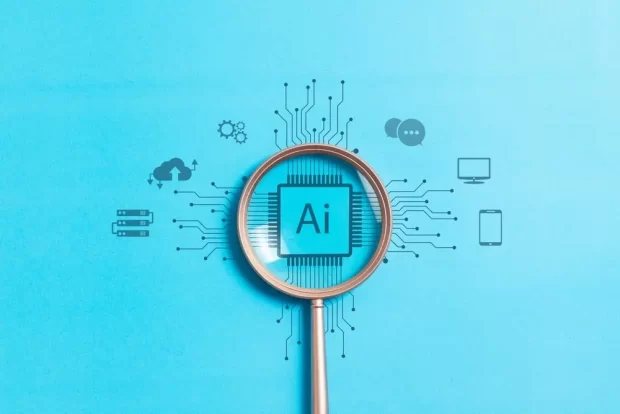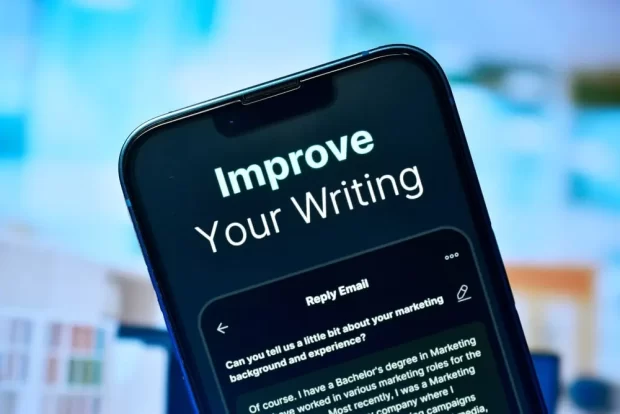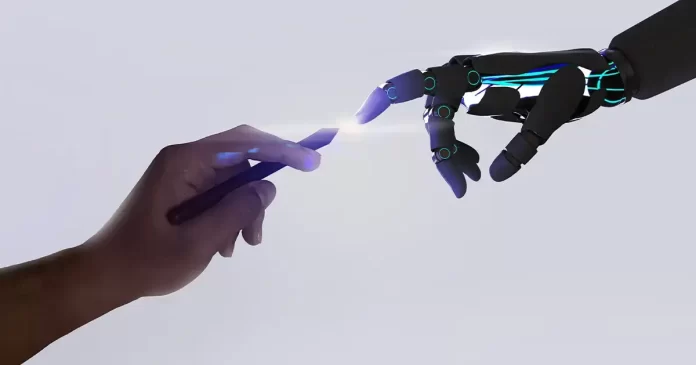AI tools in creative industries have emerged as a transformative force in the field, reshaping traditional practices and unlocking new possibilities for artistic expression and innovation. From art and design to content creation and beyond, AI tools are revolutionizing the way creatives work and collaborate. These tools leverage machine learning algorithms, natural language processing, and computer vision to automate repetitive tasks, generate novel ideas, and enhance the creative process. But what is their actual influence on today’s creative industries and the creative process in general? Let’s discuss the good and the bad of using AI tools in creative industries.
What can AI Tools do for you?
Redefine Creativity
AI tools are redefining the notion of creativity by augmenting human capabilities and offering novel solutions to artistic challenges. Through its algorithms, AI can analyze vast amounts of data, generate insights that may inspire creativity and further recognize patterns. For artists and designers, this means access to new sources of inspiration and the ability to explore unconventional ideas with the assistance of AI-driven tools.
Enhance Design Processes
In the field of design, AI tools are streamlining workflows and enhancing the design process. From architectural design to graphic design, AI-powered software can assist designers in a myriad of ways. They can help with generating concepts, iterating on designs, and even predicting user preferences. For example, generative design algorithms can produce numerous design variations based on specified parameters. This further enables designers to explore a wide range of possibilities efficiently.
Automate Content Creation
AI-driven tools are increasingly being used to automate content creation across various mediums, including writing, music composition, and visual arts. Natural language processing (NLP) algorithms can generate written content. That could be articles, reports, and marketing copy, based on input data and predefined objectives. Similarly, AI-generated music compositions and artwork demonstrate the potential for AI to produce creative content autonomously.
Personalize User Experiences
In creative content creation, AI tools enable the personalization of user experiences by analyzing user data and tailoring content to individual preferences. AI algorithms can provide users with personalized content that resonates with them on a deeper level through techniques such as content recommendation systems and dynamic content generation. Content creators can reach specific audiences more effectively through this personalization, which not only enhances user engagement.
Ethical and Societal Implications
The integration of AI tools in creative industries offers numerous benefits, but it also raises ethical and societal concerns that need to be carefully considered. AI-driven systems have the potential to replace human creatives, resulting in job displacement and the loss of creative autonomy. In addition, there are ethical concerns regarding the use of AI-generated content, such as copyright infringement, authenticity, and bias.
Collaboration Between Humans and AI
Despite these challenges, there is an emerging trend towards collaboration between humans and AI in creative endeavors. Rather than replacing human creativity, AI tools are seen as complementary aids that can augment human ingenuity and expand the creative palette. By leveraging AI’s analytical capabilities and human intuition, creators can push the boundaries of what is possible and achieve innovative outcomes that neither could accomplish alone.

Pros and Cons of Using AI
Pros
- Enhanced Efficiency: AI automates repetitive tasks, saving time and resources.
- Improved Decision-making: AI provides data-driven insights and predictive analytics, leading to better decision-making.
- Innovation: AI drives innovation by enabling the development of novel solutions to complex problems.
- Productivity: AI streamlines processes across various industries, allowing professionals to focus on more creative endeavors.
Cons
- Job Displacement: Automation driven by AI may lead to job displacement as certain roles become obsolete.
- Ethical Concerns: Issues such as privacy, bias in algorithms, and societal implications raise ethical concerns about the use of AI.
- Over-reliance: There is a risk of becoming too over-reliant on using AI.
- Unintended Consequences: The use of AI may have unintended consequences, particularly if not properly regulated or monitored.
Best AI Tools to implement in your creative work
OpenAI’s GPT-3: Transforming the Creative Writing Process
OpenAI’s GPT-3 stands as a pinnacle in Natural Language Processing (NLP), offering unparalleled capabilities in aiding creative endeavors. Its expansive language model allows it to assist not only in generating text but also in refining ideas and offering contextually relevant suggestions, making it an invaluable tool for enhancing the creative writing process. With its ability to understand and generate human-like text across a wide range of topics and styles, GPT-3 serves as a virtual collaborator, sparking creativity and providing valuable insights to writers, content creators, and researchers alike.
Adobe Photoshop with Adobe Sensei Integration: Revolutionizing Visual Creativity
In the realm of visual creativity, Adobe Photoshop with Adobe Sensei Integration represents a cornerstone in image editing and manipulation. Adobe Sensei’s integration augments Photoshop’s capabilities by offering advanced image recognition and editing functionalities. This seamless integration enables artists and designers to efficiently manipulate images, apply complex edits, and create compelling visual content with ease. Whether it’s retouching photographs, designing digital artwork, or creating visually stunning graphics, Adobe Photoshop with Adobe Sensei empowers creators to bring their imaginations to life with precision and finesse.
Google’s Magenta Project: Inspiring New Avenues for Artistic Expression
Google’s Magenta Project revolutionizes the creative process by harnessing the power of generative AI algorithms to inspire new forms of artistic expression. Magenta’s AI models are trained on vast datasets of music, artwork, and designs, enabling them to generate original compositions, artworks, and designs that push the boundaries of creativity. By leveraging Magenta’s innovative tools and resources, artists and designers can explore new artistic territories, experiment with unconventional styles, and unlock fresh perspectives on their creative endeavors.
Autodesk’s Generative Design Software: Redefining Design Exploration and Optimization
Autodesk’s Generative Design Software represents a paradigm shift in the field of design, offering designers and engineers a powerful tool for exploring design possibilities and optimizing complex structures. Powered by AI algorithms, Autodesk’s generative design software can analyze design constraints and parameters to generate a multitude of design options, each tailored to meet specific criteria and objectives. This iterative approach to design allows for rapid exploration of design alternatives, ultimately leading to more innovative and efficient solutions across various industries, from architecture and engineering to product design and manufacturing.

Will AI replace real human creativity?
Well, we say no! AI can really boost your creative process but will never replace the real human input. Let’s take a look at a few of the most important aspects of this:
Complementary Roles
In many cases, AI is not intended to replace human input but rather to complement it. AI technologies excel at handling repetitive and data-intensive tasks, freeing up humans to focus on tasks that require creativity, critical thinking, and emotional intelligence.
Limitations of AI
AI algorithms operate based on predefined rules and patterns learned from data, which means they may struggle with tasks that require contextual understanding, empathy, and nuanced decision-making. Human input remains essential in domains such as art, literature, and interpersonal interactions where subjective judgment and emotional intelligence are paramount.
Symbiotic Relationship
The most effective approach is often one of collaboration between humans and AI, where each leverages its strengths to enhance the capabilities of the other. This symbiotic relationship allows humans to harness the analytical power of AI while retaining control over decision-making and creative direction.
Now, get creative!
The influence of AI tools on creative industries is undeniable, reshaping the landscape of art, design, and content creation in profound ways. From redefining creativity to automating content creation and personalizing user experiences, AI-driven technologies offer immense potential for innovation and efficiency. However, as we navigate this transformative era, it is essential to address the ethical, societal, and practical implications of AI integration. It’s important to ensure that creativity remains a collaborative and human-centered endeavor. By embracing AI as a tool for augmentation and inspiration, creatives can unlock new realms of possibility and continue to shape the future of creative expression.
FAQ
AI tools can influence creativity by providing inspiration, generating ideas, automating repetitive tasks, and enabling new forms of expression through techniques such as generative art, style transfer, and content recommendation.
AI tools can streamline workflows by automating time-consuming tasks, providing real-time feedback, assisting in idea generation and iteration, and enabling collaboration between humans and machines.
While AI tools can assist and augment human creativity, they are not necessarily replacing it. Instead, they offer new opportunities for collaboration, exploration, and innovation, allowing humans and machines to work together in symbiosis.
Ethical considerations include issues of authorship, ownership, bias in algorithmic decision-making, privacy concerns related to data usage, and the potential impact on employment in creative professions.
Accessibility varies depending on factors such as cost, technical complexity, and available resources. While some AI tools require specialized knowledge and infrastructure, others are becoming increasingly accessible through user-friendly interfaces and open-source platforms.
Future developments may include advancements in generative AI algorithms, improved human-AI interaction models, enhanced personalization and customization capabilities, and greater integration of AI into creative workflows and tools.
Learning resources include online courses, tutorials, workshops, and documentation provided by software developers and educational institutions. Additionally, communities and forums dedicated to AI in creative fields offer opportunities for collaboration and knowledge sharing.

